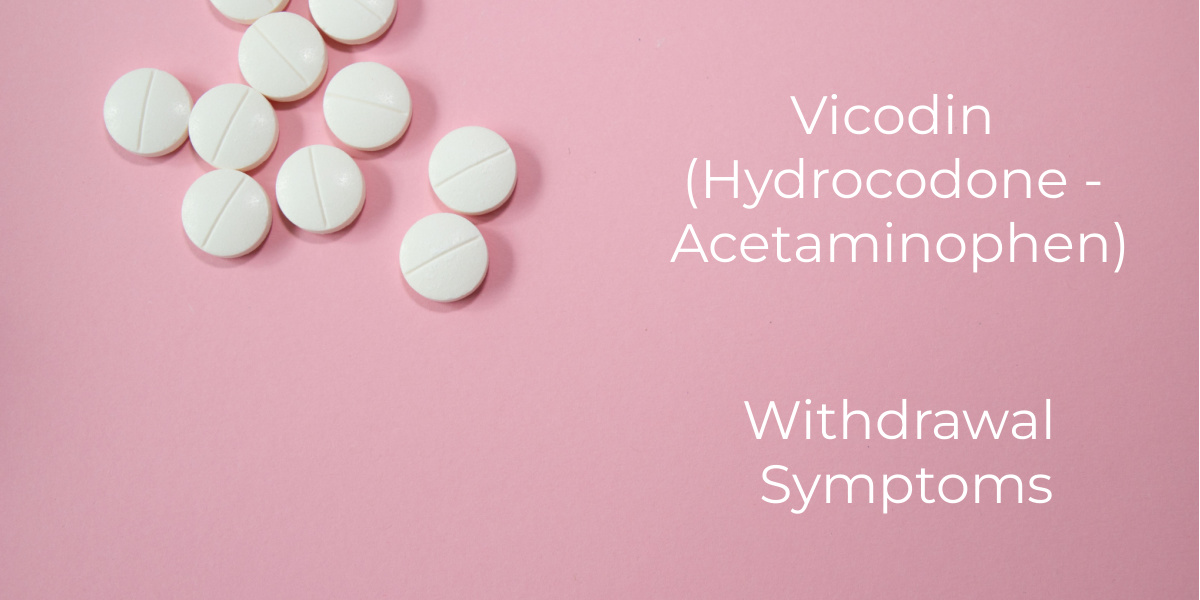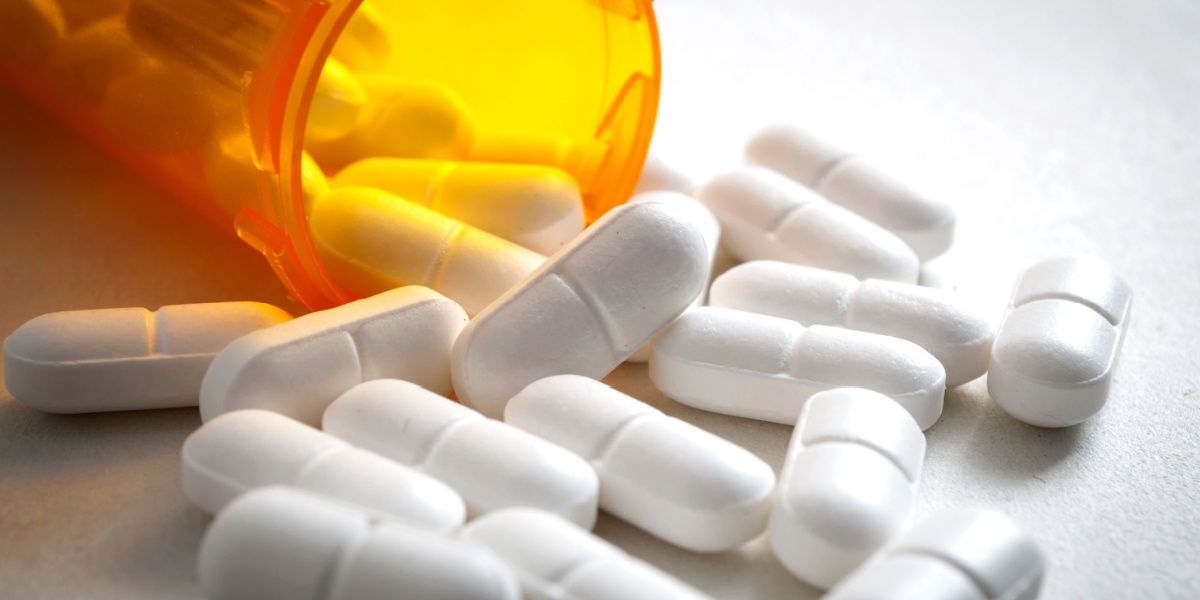Vicodin is a brand-name medication containing the opioid hydrocodone and acetaminophen. It is a semi-synthetic opioid analgesic used to treat severe pain that cannot be managed by alternative medications. [1][2]
Vicodin is a Schedule II controlled substance, due to its potential for abuse and dependence. It is a widely prescribed and abused medication and can cause mild to severe withdrawal symptoms when stopped, so a gradual dose reduction is recommended. [2][3]

Does Vicodin cause withdrawal symptoms?
Discontinuing Vicodin can result in opioid withdrawal symptoms, especially after prolonged and heavy use and when stopping abruptly. It is advised to gradually reduce the dosage when stopping Vicodin, to help prevent or reduce withdrawal symptoms. [4]
It is not unusual for people taking Vicodin, whether prescribed or illicit, to develop a tolerance to the medication, which can result in a need for increased or more frequent doses. Similarly, it is common to develop a dependence on the medication, especially after prolonged use, which can increase the likelihood and severity of withdrawal symptoms when Vicodin is discontinued. [1][3]
Also, medications used to treat opioid overdose and opioid use disorder, such as naloxone and naltrexone, can cause withdrawal symptoms to occur in individuals who have recently taken Vicodin. [5]
Vicodin withdrawal symptoms
It is common to experience withdrawal symptoms when discontinuing Vicodin, particularly when stopping abruptly. Vicodin withdrawal symptoms can include: [2][4][5]
- Restlessness
- Anxiety
- Irritability
- Chills
- Sweating
- Yawning
- Runny nose
- Aches and pains in muscles or joints
- Dilated pupils
- Fatigue
- Weakness
- Stomach pain or cramps
- Nausea
- Vomiting
- Diarrhea
- Increased blood pressure or heart rate
- Cravings
In some cases, withdrawal symptoms can be severe or persistent. This is more likely in individuals who have used heavy doses of Vicodin for an extended time. Examples of severe withdrawal symptoms include: [2][6]
- Persistent vomiting or diarrhea can lead to dehydration, which may cause cardiac arrest and fatality.
- Extreme mood changes can occur, including suicidal thoughts and attempts
Vicodin withdrawal timeline
Typically, withdrawal symptoms will emerge within 12 hours of the last dose of Vicodin. These symptoms tend to be at their most severe during the first three days and will usually reduce in severity within a week. [6][7]
For some people, withdrawal symptoms can last longer, sometimes continuing for several weeks or months. Cravings and mood changes are often the most long-lasting withdrawal symptoms and can, in some cases, persist for up to a year. [8]
Generally, withdrawal symptoms will be more severe and persistent for individuals who have taken large doses of Vicodin for prolonged periods. [4]
Vicodin cessation timeline
A safe and effective cessation timeline for discontinuing opioids like Vicodin will vary depending on the individual. Some people may experience more severe withdrawal symptoms, in which case they will require a slower and more gradual taper, while others might manage a quicker reduction and cessation process. [7]
Typically, it is recommended to reduce the daily dosage by 10-25% every two to four weeks. If withdrawal symptoms occur, cessation can be paused or reductions can be made in smaller increments. Factors that can impact the severity of withdrawal symptoms and speed of cessation include the amount and duration of Vicodin use and a person’s physical and mental health. [2]
Is Vicodin safe to withdraw from at home?
Someone who has been taking Vicodin for a short time and in small doses may be able to safely withdraw from Vicodin at home. However, withdrawal symptoms are likely to occur after several weeks of use and can require professional intervention. As such, it is generally not recommended to withdraw from Vicodin at home without professional support. [4]
Individuals who wish to remain at home while discontinuing Vicodin use can utilize outpatient opioid treatment services, to ensure that they detox safely. Professionals can support detox by providing advice about tapering, managing withdrawal symptoms, and treating any physical or mental health concerns. [7]
Some people choose to remain at home and abruptly discontinue Vicodin use, known as cold turkey. This can increase the risk and severity of Vicodin side effects. In these instances, it is advised to inform friends and family, so they can provide support and seek professional advice if necessary.[4][7]
Vicodin detox treatment
When detoxing from Vicodin, it may be necessary to utilize professional intervention. Various treatments are available, through inpatient or outpatient services. [4]
Outpatient treatment involves attending appointments with a clinician to receive medicinal or therapeutic interventions. Inpatient treatment can include staying at a residential facility, such as a detox or rehab center, where professionals can monitor and treat withdrawal symptoms and provide interventions such as medications, group and individual therapies, and holistic therapies. [5][7]
Vicodin detox often involves the use of medications, such as: [5][7][8]
- Replacement opioids: Buprenorphine and methadone are both opioid agonists that can be used to replace opioids such as Vicodin and help in the detox process. They cause a similar effect to Vicodin, which can help reduce cravings and withdrawal symptoms. However, they do not cause the same euphoric effects. These medications can be used as a short-term treatment during detox or can be continued long-term as a maintenance treatment.
- Withdrawal symptom management: Various medications can be prescribed short-term to help reduce the severity of withdrawal symptoms. This can include clonidine, loperamide, metoclopramide, and benzodiazepines. These medications do not reduce cravings but can help manage withdrawal symptoms such as nausea, vomiting, diarrhea, anxiety, and insomnia.
Interventions can be implemented during the detox process that can continue throughout the recovery process. This can include holistic therapies such as mindfulness, exercise, and nutritional support, support groups such as Narcotics Anonymous, psychotherapy, and psychosocial interventions.[4]


.svg?v=1722504068)
-guide-detail.jpg?v=1722504000)

